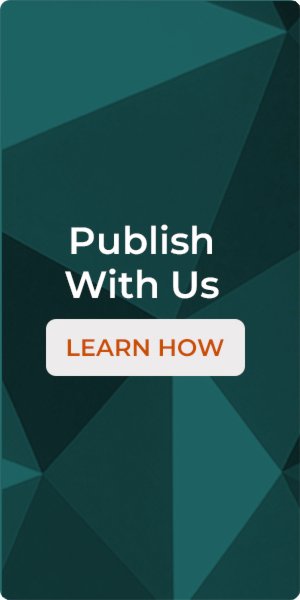Gallaudet University Press is committed to maintaining high editorial and design standards for our books. Following these guidelines will help us maximize the quality of the images in your book and avoid delays in production. If your artwork does not meet the criteria for being the proper size and quality necessary for publication, we will return it to you for correction.
Selecting Artwork
- Obtain art from professional sources, such as museums, archives, libraries, professional photographers, stock image houses, or professional illustrators, whenever possible. In most cases, camera phone images will not work for a printed book.
- Be judicious in selecting the artwork for your book. Do your figures and charts effectively support your book's arguments, hypotheses, or conclusions?
- Prioritize clarity and simplicity. Your figures and charts should be easy to comprehend for readers unfamiliar with your specific research area. Use clear labels, titles, legends, and annotations to provide context. Figures and tables must have captions.
- Assess the quality of the figures. Some issues that may make your images unusable are low resolution, blurriness, poor lighting, graininess, or overexposure. Please do not use Photoshop or similar programs in an attempt to improve the quality of the images.
-
The minimum resolution for photographs is 300 ppi (pixels per inch). The minimum resolution for line art is 1200 ppi.
Please note: images formatted for use on the web or for online presentations are often very low resolution (usually around 72 or 96 ppi). They may look crisp and clean on a computer monitor but will not print well and therefore cannot be published in the book. - Ensure you have the right to use the art. Has it been published in another book or journal? Did you find it on the internet? See the next section on Copyright and Permissions.
- For additional information on determining whether your images are good enough to print, please see the Resources section of this guide.
Copyright and Permissions
- If your art has been previously published, you must obtain permission and pay any required permission fees to reprint it. Check the caption of the original photo—if it has a credit line, that will indicate who to ask. No credit line? You’ll need to contact the publisher of the book or journal in which it originally appeared. This should be done early in the process—some publishers, particularly the larger ones, can take months to respond to permission requests.
- Note that most items copyrighted in the United States through 1924 are in the public domain as of 2020, and US federal government documents are always in the public domain.
Reusing Your Own Images
Check your publishing agreement if you are reusing your own previously published images. Does it give you the right to reprint and adapt the original work? If not, you will have to contact the publisher or journal and ask for permission.
Internet
Every piece of content gains copyright as soon as it is created, including content on the internet. You cannot take a photo off the web or stills from an online video to use in your book without getting permission from its owner to use that item.
How Do I Get Permission?
- We can send you a sample form that you can adapt for your permission requests. Many publishers have online forms for you to fill out that will automatically submit your request to the correct department. For websites and video channels, email the site/channel owner. For additional information on permissions, see the Resources section in this guide.
- When you submit your final artwork, you must send all documentation granting permission to use your art to the Press.
Submitting Artwork
- Send your artwork as soon as possible after your manuscript has been accepted. Don’t wait until your final manuscript is due. The Press needs ample time to review the viability of your images, and you may need time to find replacements for those that are unusable.
- We highly recommend that you use an art log to keep track of your artwork and any associated permissions. Ask your editor for an art log template if you haven’t received one yet.
- Submit tables, figures, and illustrations/photographs in separate files in their original format. If you created your bar graph in Excel, submit the file in Excel. Do not embed the art in the text of your word processing file.
- All figures should be at least 8 inches wide and 300 ppi. We prefer figures to be submitted as .tiff files, but we will accept .jpg files as well.
- All artwork, except in rare cases, will be converted to grayscale. Please keep that in mind as you are determining whether to use a specific image in your book. In addition, be sure that your text does not reference color when discussing the art.
- Artwork should be saved as clearly named individual files, and those names must match the callouts in the text. Number illustrations and tables consecutively throughout the manuscript. In a contributed volume, they should be numbered consecutively within each chapter using the chapter number as a prefix (table 1.1, table 1.2, figure 4.1, figure 4.2).
-
Include table, figure, and illustration callouts in the text and indicate approximate placement within angle brackets: <table 1 near here>. Callouts can only be placed between paragraphs and not within paragraphs.
Note that art and illustrations may not appear precisely where you insert callouts in the manuscript, as their placement is determined by the requirements of typesetting in order to accommodate page breaks and other features in the text, so your references in the text should allow for flexibility of placement (e.g., “see figure 8,” not “see figure 8 below”). - All artwork (including charts, graphs, and tables) must be accompanied by alt text/image descriptions, which will be embedded in the file for screen readers. Provide alt text in a separate Word file. See the Resources section for guidelines.
- Save captions for artwork and illustrations in a separate Word file.
Tables
- Avoid tables that have only one column. They are confusing for users of screen readers because they can’t find the expected second column. Instead, convert the table to a list.
- All columns should have headings, even if the headings seem evident from the caption. Headings help readers to track what the data in any given cell refers to.
- Do not merge columns or rows. Merged elements are difficult for users of screen readers to follow.
Graphs
Use black-and-white patterns, not color, to distinguish different elements. Be careful that your text does not reference color when discussing the art.
Resources
Are My Images Good Enough to Print? Some Tips for Authors
AUPresses Guidelines for Submitting Illustrations
Books without Barriers: A Practical Guide to Inclusive Publishing

